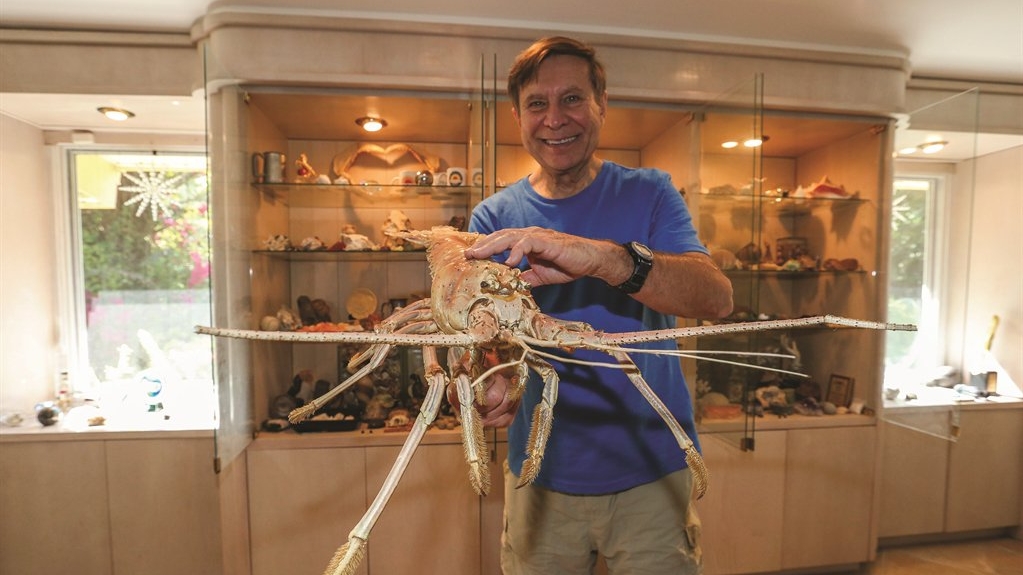The Coast Is Clear

If you plan a visit to a beach somewhere in the United States, odds are good that Stephen Leatherman ’70 has been there before, wiggling his toes in the sand. Internationally recognized as a researcher, author and coastal scientist, Leatherman is even more renowned for the annual rankings of American beaches he’s compiled for the past quarter-century. Widely known as “Dr. Beach,” Leatherman builds his Top 10 lists on a scientific foundation. But he conducts the first and most simple test by kicking off his flip-flops.
“I never wear shoes. I have to feel the sand,” says Leatherman, 69, a professor in the department of earth and environment at Florida International University.
Leatherman’s famous alter ego might not exist, though, if not for the red clay soil of his native North Carolina. He loved playing outdoors as a boy, but his mom did not love scrubbing red stains out of his clothes. She lobbied for a clay-free zone. His dad turned a truckload of sand into a backyard mountain — silky, white and, crucial to Mom, non-staining. Leatherman’s eyes still sparkle at the memory of those childhood castles: “I was the sand king of Charlotte.’’
Thus began a lifetime attraction for Leatherman. He first glimpsed the ocean as a child, after falling in love with the 1950s black-and-white version on TV’s Sea Hunt. Spying the colorful sea against all that beautiful sand firmly set the hook, he says. How much does Leatherman love the beach? He and his wife, Debbie, named their daughter Sandy. Their son’s middle name is Beach. Despite his career, he still chooses the beach when he goes on vacation. He sings along to the Beach Boys. And he once created a squall among stodgier colleagues annoyed by his office poster: “Science Is a Day at the Beach.” “Maybe I shouldn’t have so much fun,’’ he says. He’s even a member of the International Sand Collectors Society (their motto: Discovering the World, Grain by Grain). The organization is a loose collection of scientists, teachers, hobbyists and others who enjoy collecting, studying and comparing samples of sand.
Pop culture and serious science
At his sprawling, tropical-tree-shaded home in suburban Miami, Leatherman has brought the beach inside. Shells abound on floor-to-ceiling shelves, along with fossilized creatures from ancient oceans. Nesting shorebird photos adorn walls. In a home office stacked with scientific papers, sand samples crowd a cardboard box. They’re a fraction of a collection Leatherman stores in more than 1,000 sandwich-sized plastic bags.
Rising sea levels and eroding coasts are his specialty. He also studies rip currents, crusading for public safety amid 100 lives claimed annually on U.S. beaches. Professional achievements march across his 60-page résumé, and Congress has called on his expert testimony 11 times.
But it’s the much-publicized lists that crowned Leatherman a pop-culture king. They evolved from his off-the-cuff answer in 1989 to a writer for Conde Nast Traveler asking about good beaches. He rattled off the first 10 that came to mind. When his picks were published, the sand hit the fan. Who was this Joe Schmo to decree the best beaches? Tourism chiefs and civic boosters from coast-to-coast demanded to know why their beaches missed the boat.

He does not visit every beach every year, relying in part on government reports and updates from a network of researchers and experts developed over decades. He also consults his collection of more than 20,000 maps and 60,000 beach photographs to gauge good or bad changes — erosion or re-nourishment; the addition of needed amenities or too much development.
Each criterion is scored on a five-point scale, measuring everything from beach width and wave height to water warmth and clarity. Leatherman also takes note of the presence or absence of what he discreetly calls “floatables” — human waste, toilet paper and other trash. He’s a tough grader. Since 1991’s first formal list, no beach has earned a perfect, 250-point score.
He releases a new list each Memorial Day, which garners stories in newspapers and on television stations. By virtue of warm weather and sheer number of beaches in Florida and Hawaii, those states have grabbed more spots on the lists. The rankings change year to year, though several beaches have made repeat appearances. Among them: Coronado Beach in California, Siesta Beach in Florida, and North Carolina’s Ocracoke Island.
Oprah, Psycho and an irritated seagull
Making the list is a bonanza. Just ask Wit Tuttell, executive director of North Carolina’s state tourism office. When Dr. Beach awarded Ocracoke Island the top spot in June 2007, the media hoopla reached an audience of 60 million. That month’s traffic to VisitNC.com set a record: 700,000 visitors, a 40 per-cent increase over June 2006. “It was tremendous for us,” says Tuttell. “Huge.”
Also huge is the fame the rankings have conferred upon Leatherman, whose image is more Indiana Jones than erudite professor. Oprah Winfrey spotlighted him on her show. David Letterman fake-groused about him on a Top Ten list.
“Unlike a lot of academics, he can laugh at himself,” says Frank Galgano, a former student of Leatherman’s who now chairs the geology and environment department at Villanova University.
With more than 200 television appearances, Leatherman’s been on every network and all over cable. He’s been profiled in hundreds of publications, from People magazine to The Economist. Germans bound for the U.S. consult his rankings, and in Spanish-language media, he’s “el Doctor Playa.”
Part academic, part adventurer, Leatherman makes for a good story. He went chest-to-pouch with a six-foot intruder — a kangaroo — at an Australian beach resort. In his twenties, even as a strong swimmer in prime physical condition, he nearly drowned gauging the powerful force of a rip current off Ocracoke Island. And more recently, he narrowly escaped an encounter in the Florida Everglades with a 13-foot alligator nicknamed Psycho.

But his closest call came courtesy of an irritated seagull. Leatherman was driving a vanload of researchers on Maryland’s Assateague Island when the huge bird flew in through an open window and draped a wing over Leatherman’s face.
“Everything went black,” he says.
The bird bit. The passengers screamed. Leatherman steered blindly toward the ocean. So maybe science isn’t always a day at the beach. But even with the occasional mishap, Leatherman remains enthusiastic about the path he chose at NC State. A surveying project on North Carolina’s Outer Banks allowed him to observe storms and erosion. He expanded on that experience at University of Virginia, where in 1976 he earned a Ph.D. in the new specialty of coastal science.
Leatherman’s moniker was born decades ago, at the University of Maryland. Some of the 250 students taking his coastal environment class could barely manage to stumble in — at 11 a.m. When recalling his name required unreasonable effort, they dubbed him Dr. Beach.
In 1997, Leatherman left Maryland for Florida, where he became the first director of FIU’s International Hurricane Research Center. At FIU, he teaches and oversees graduate research. He also consults, and serves as an expert court-room witness. Some of the legal cases are heartbreaking, such as the 12-year-old boy who suffocated in 2012 when a sand tunnel he was digging on a New Jersey beach collapsed. Consulting clients range from millionaires seeking a perfect private island, to governments and others enmeshed in “sand wars,” the large-scale theft of beach sand.
As for his lists, Leatherman plans to issue them as long as he’s having fun and humans are drawn to beaches. “We’ve got saltwater in our veins,’’ he says.
-Written by Deborah Sharp, a mystery author and freelance writer in Fort Lauderdale, Fla.
-Photography by Matias Ocner
Original story published by the NC State Alumni Association.


